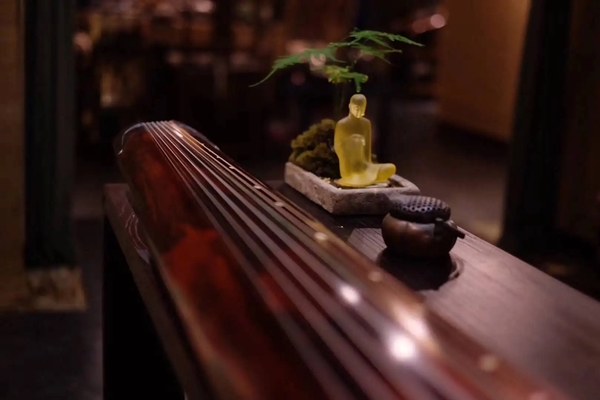Guqin practice of the sixteenth word know-how detailed interpretation
Guqin, as an ancient and rich cultural instrument in China, its playing techniques pay attention to the integration of body and mind, rhythm and emotion. In the process of learning Guqin, there is a set of sixteen words that condense the wisdom of countless piano players. They are: "Light, loose, slow, even, Tian, light, elegant, beautiful, bright, mining, quiet, far, ancient, clumsy, middle, and". These sixteen characters cover the essence of guqin technique and aesthetic pursuit, which will be interpreted in detail below.

1. Light: Playing guqin should be light but not floating, grasp the appropriate strength, fingertips gently touch the strings, the sound should be full and soft, reflecting the implicit beauty of Guqin music.
2. Loose: When the fingers are upstream on the strings, they must be relaxed and avoid stiffness, so as to ensure smooth timbral color and natural stretch of the melody like flowing water.
3. Slow: The practice in the initial stage should be slow, carefully understand the changes of each finger, slowly get familiar with the melody structure of the piano, and gradually improve the skills.
4. Even: Whether it is according to the string or picking the string, the action needs to be uniform and coherent, and the transition between each note is smooth, so as to achieve balanced sound quality and harmonic temperament.
5. Tian: The state of mind needs to keep quiet, free from external interference, focus on the music itself, play the piano with a quiet heart, and convey a kind of indifferent and far-reaching artistic conception.
6. Light: the music should be light and flavoured, not overblown, and it should be affectionate in the bland, giving people endless artistic enjoyment after aftertaste.
7. Elegance: Qin music performance should pursue elegance, follow traditional aesthetic concepts, and reflect the elegance and implicancy of traditional Chinese culture.
8. Li: The music should have the beauty of rhythm, pleasant to listen to, just like the sound of silk and bamboo, gorgeous and elegant.
9. Bright: Although it is a guqin, the tone should be bright and not harsh, showing the charm of the guqin with empty and clear sound quality.
10. Picking: It refers to the color sense of the music. When playing, it is necessary to give the music rich musical expression, so that each song has its own characteristics and emotional colors.
11. Quiet: Keep inner peace in the process of playing, so that every note can fall smoothly, creating a quiet atmosphere unique to the guqin.
12. Far: the music should have a profound artistic conception, as if it can penetrate time and space, guide the listener into the long river of distant history, and feel the poetic feelings of the ancients.
13. Ancient: Guqin carries a long history and culture, and it should reflect the simple and mellow ancient style when playing, so that people can taste the unique charm of traditional Chinese culture.
14. Clumsy: although it is "clumsy", it is back to nature. It does not deliberately pursue complicated and fancy skills, but expresses honest feelings with simple and unadorned music.
15. Middle: Grasp the balance and harmony of timbre, be impartial and just right, reflecting the concept of the Chinese culture of the golden mean.
16. Harmony: The pursuit of harmony between music and mood, harmony between people and the piano, so that every playing becomes a dialogue and purification of the soul.
All in all, this 16-character trick not only covers all aspects of guqin skills, but also reveals the spiritual core of Guqin art at a deeper level, providing guidance for every guqin lover to practice and the direction of realm improvement. Through continuous cultivation and understanding, I believe that every player can find their own musical language and spiritual sustenance in the world of Guqin.
 渝公网安备 50010702504639号
渝公网安备 50010702504639号